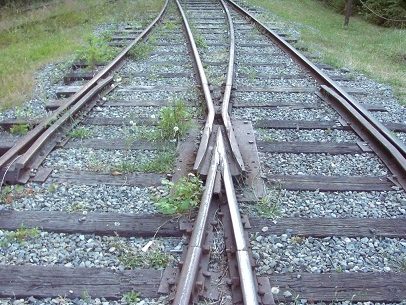5.5.1 to 5.5.6
Course subject(s)
5. Monitoring and Maintenance
Performance over Time
5.5.1 Structural Health Monitoring
A hot topic over the past years in the world of monitoring is structural health monitoring, or SHM in short. Structural health monitoring differs from (non-)destructive testing in some essential ways. Where (non-)destructive testing can be considered as active testing (you deliberately send a certain signal or strain in a component to see its response), SHM can be considered as passive testing.
Rather than forcing the structure or component with a certain signal or strain, you use the response under normal operating conditions to assess the quality of the structure. For bridges, this would mean the normal loading cycles of passing traffic. This brings in huge advantages, since there is no need for any excitation, thus no extra strain on the structure. Furthermore there is no unavailability of the structure during testing. Since the testing is done under normal operating conditions, this also implies that testing can be done all day long, every day of the year, thus providing almost continuous information about the quality of the monitored structure. All you would need are some well placed sensors and a good data-analysis system in order to implement this. Although this sounds simple, in practice implementing a good SHM system is a very specialized job!

5.5.2 Implementation
Implementing a good Structural Health Monitoring (SHM) system already starts during the design phase of a structure. In order to allocate the sensors to the correct position, good knowledge is required about all details regarding the behaviour of the structure. Furthermore, knowing the locations with the clearest response in case of wear or breakage of parts is essential. Just like in normal monitoring solutions, this means that all the possible failure modes have to be properly identified and modelled within the design of the structure. In some cases, it can even be interesting to add cheap-to-replace, smaller parts, which are much more vulnerable to changes in the system and can therefore give a clearer indication of a failure.
After the design of the SHM system, it is by far cheapest to integrate the SHM system with the structure it is supposed to monitor during the building process. This way, things like cabling and power supply can be integrated in the structure, reducing the costs of installation, while increasing the durability of the SHM system.
5.5.3 Design for Maintenance
Designing for maintenance is done from the philosophy that by making adaptations in your design to reduce maintenance costs, over the whole lifetime you’ll eventually have a cheaper design. The initial costs will be higher, but the maintenance is more economical, so in the long run you will save money.
In order to do so multiple strategies are available. You can either:
- Make the structure (or parts of the structure) much stronger than they need to be to extend the life-span.
- Select specific materials to increase the expected life-span
- Design the weak parts in such a way that maintenance can easily be performed.
All these methods either target the interval in which maintenance has to take place, or the costs that are associated with performing maintenance, which both will help to reduce the total costs of maintenance for the structure.
5.5.4 Overdimensioning
When overdimensioning a structure, you design it to maintain much higher loads than it will actually have to deal with. This does influence maintenance in two important ways. First of all, materials such as steel can eventually fail from cyclic loads, even if they are under the design loads. The number of cycles it can maintain is depending on the stress in the material. By overdimensioning a structure you reduce the overall stress in the components and thus can increase the lifespan.
The second way in which overdimensioning influences maintenance is by allowing a certain degree of wear or damage on the system before this becomes critical. A system which is designed for double the loads it actually has to deal with, can show some damage in parts before it becomes critical and the structure has to be closed for replacement. This not only increases the maintenance interval, but also allows for better planning of the maintenance in such a way that it least influences the overall availability of the structure.
5.5.5 Material Selection
All the materials that are available in the world have very different characteristics, which determine how they can be used in construction and how much maintenance is needed. For example, concrete is very good in dealing with pressure, but when it has to deal with pulling force it will come apart almost immediately. Of course it is clear that no-one will try and use concrete in such a way.
Although this characteristic is really clear, there are also many cases in which a characteristic will not lead to immediate failure, but can make a material less suitable for using for the structure over a longer period of time. For example, wood, which is a good building material, is subject to weather influences, which can lead to issues such as rot.
Another common example is the use of materials in hostile environments, such as in or close to the sea. Many types of steel will be affected by the salt from the sea, thus will have a shorter life span than a similar structure in a non-hostile environment.
The different types of materials and their specific characteristics and (dis)advantages make a really long list, which we’ll not discuss in this MOOC. However, it is important to realise that there is much more to material selection than just the force a specific component has to deal with.
In railways, we still see the use of many different materials. For example wooden and concrete sleepers are most common, but also experiments with synthetic materials are being conducted.
Even the rail itself, which of course is made out of steel, does have many different variations. Many different steel grades with different characteristics are in use in railways.
5.5.6 Modular Design
Often the largest costs for maintenance come from the difficulty to replace a certain part of the structure, and the associated down-time of the structure as a whole. With modular design, the most vulnerable parts of the system are designed in such a way that replacement can be an easy and quick process.

For example, a frog in a railway switch. This is the part which is most subject to wear and thus one of the most commonly replaced parts. However, in conventional railway systems, replacing this part is a lot of work. First of all, the old frog has to be cut loose from the rest of the rail. After this the new frog can be put in place and welded onto the remaining track. The total process takes multiple hours. However, if this replacement could be made possible without cutting and welding, but by simply attaching the frog to the remaining rail with some bolts or other types of connections, hours could be saved each time the frog has to be replaced. In the most ideal case replacement times could be reduced to as little as 15 minutes. This greatly benefits the availability of the rail network as a whole and thus reduces maintenance costs.A frog in a railroad switch (image by Hunda)

Railway Engineering: An Integral Approach by TU Delft OpenCourseWare is licensed under a Creative Commons Attribution-NonCommercial-ShareAlike 4.0 International License.
Based on a work at https://ocw.tudelft.nl/courses/railway-engineering-integral-approach/.




